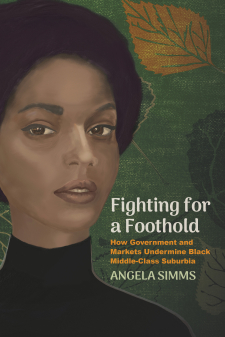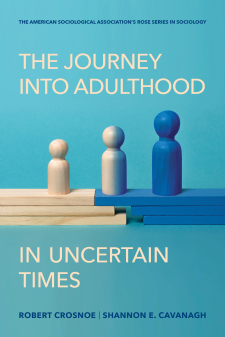Main navigation

The author of this guest blog post is Francesca Polletta, professor of sociology at University of California, Irvine. Polletta was a visiting scholar at the Russell Sage Foundation during the 2004-2005 and 2018-2019 academic years.
For groups trying to win social and political change, telling personal stories has become a popular strategy. Undocumented students and victims of sex trafficking tell their stories to Congress; people who have been homeless tell their stories to journalists; women who have been harassed or had abortions tell their stories online. Advocacy groups can now hire storytelling consultants, glean tips on storytelling from workshops, webinars, and handbooks, and secure funding from leading foundations to train their members to tell their stories.
The case for stories is compelling. More than dry statistics or logical arguments, good stories engage their audiences emotionally and help them to empathize with people they had only considered from a distance. Personal stories can puncture the myths and stereotypes that stand in the way of social change. And they may motivate members of the public to act—to give money, time, or votes—on behalf of a cause that previously felt remote.
But stories only sometimes do those things. Emerging research in diverse fields suggests that stories’ ability to persuade is by no means a sure bet. To the contrary, stories’ effectiveness depends on features of the story and the issue the story is about, as well as on audiences’ prior ideological leanings and the context in which the story is heard. Tell the wrong story to the wrong audience and it is heard as “just” a story: as implausible or irrelevant. Communication scholars Shuo Zhou and Jeff Niederdeppe had people read a story about a teenager living in a neighborhood lacking access to nutritious food. The more the story described the teenager and his feelings, the less people empathized with him, and the less likely they were to support governmental action aimed at combating food deserts. Why? Probably because putting a face to the protagonist led readers to see him as responsible for his own fate. But when it comes to issues like food insecurity, and inequality more generally, understanding and acting on the problem requires that readers see people’s fates as shaped by forces beyond their control.
To be sure, audiences do not always blame the story’s hero for her fate or see the problem as individual rather than collective. When media scholars Rhonda Gibson and Dolf Zillman had people read a story about a carjacking, those who read a more sensational version of the story tended to believe that carjacking was prevalent in their region. In other words, the sensationalism of the episode led readers to see it as representative of a broader problem. Conservative tort reformers capitalized on this tendency in the 1990s when they circulated stories of greedy Americans winning millions in frivolous lawsuits. The woman who spilled McDonald’s coffee on herself and sued for three million dollars and the woman who sued a hospital after a CAT scan destroyed her psychic powers were just two of the stories. They were all either exaggerated or untrue, but they succeeded in convincing Americans that people were becoming more litigious, juries were favoring plaintiffs, and the resulting costs of medical malpractice insurance were driving physicians out of practice. None of this was true but, as legal scholars Walter Haltom and Michael McCann show, the storytelling campaign produced anti-tort legislation in almost every state. Why were the stories so persuasive? Their sheer outrageousness made them engaging and worth sharing, but also made them seem to be the tip of the iceberg of a much more pervasive problem. More generally, I suspect that stories about relatively powerless people taking advantage of the system—welfare cheats, superpredators, women having anchor babies and so on—are more likely to be heard as representative than are stories of people being hurt by the system. But this is something we need to better understand: when is the story of one person heard as typical rather than exceptional?
As a sociologist, I’m also struck by the ways in which the specifically institutional contexts of storytelling shape the power of the form. For example, when the Equal Employment Opportunity Commission charged major American companies with discrimination in promoting women in the 1970s and 80s, the fact that legal courtrooms require individual testimony meant that plaintiffs had to supply individual women testifying to having wanted the better-paying jobs. In fact, in most cases women had not wanted the jobs—but only because management communicated by way of advertising and word of mouth that the jobs were appropriately men’s jobs, not women’s jobs. This was hard for individual witnesses to explain by way of a story, though. Stories begin with protagonists who already have wants or goals or dreams; indeed, protagonists’ wants motivate the story. Plaintiffs should have been able to say, “we cannot tell a story about women dreaming for a better job; we can only talk about the obstacles to dreaming.” But the legal requirement of individual testimony made that impossible.
Another example of institutional constraint comes from an otherwise largely successful storytelling strategy. Since the 1980s, advocates have convinced television writers to integrate storylines into popular shows about designated drivers, mammogram screening, organ donation, safe sex, acquaintance rape, and teenage suicide. Such efforts have proven remarkably effective in changing viewers’ behavior. But there may be a hitch. When Christine Tomlinson and I studied how acquaintance rape was portrayed on teen television dramas over the course of twenty years, we found that after advocates lobbied writers, a number of high-profile shows, including Beverly Hills 90210, Party of Five, Felicity and others, featured sensitive portrayals of sexual assault. The shows took the perspective of the victim, explored her feelings that the assault had been her fault, and then showed her, usually with the help of friends, coming to see the assault as a crime. The hitch was that by the mid-1990s, after acquaintance rape had been “done” as a social problem, it reverted back to serving as a plot device. Rape or attempted rape was treated as the eventual penalty for a young woman’s licentiousness or as the spark to a romance with her rescuer, or later, after the emergence of the teen noir genre, as an indication of a world without moral compass.
Legal norms in the first case and television writers’ premium on novelty in the second made it difficult for advocates to tell the stories they needed to tell. We know too little, though, about how the norms of other settings—legislative hearings, news reporting, social media, for example—privilege some kinds of stories over others.
None of this suggests that progressive advocates should abandon personal storytelling altogether. Rather, it suggests, first, that telling effective stories requires real craft. Simplicity is deceptive. Effective stories work within accepted genres but tweak them, combine familiarity and surprise, rely on sophisticated literary tropes to counter all-too-familiar stereotypes. The importance of craft, though, is in tension with the idea that those affected by a problem—sex-trafficked young women, transpeople, undocumented students and so on—should tell their stories in the way they want. After all, it’s their story. If advocates are going to single-mindedly produce the most effective stories, they need also to provide forums in which those affected by the issue can be heard in the ways they want. Second, advocates should recognize the institutional norms of storytelling and either accommodate those norms or make them the subject of explicit challenge. If television writers want novelty, give them new story lines. If reporters insist on giving equal time to the opposition, advocates should get their members interviewed as “ordinary people,” who typically are not counted as tipping journalistic balance in favor of one side. Sometimes, instead, advocates should directly target the institutional rules around storytelling. AIDS activists, to give one example, successfully fought to get the stories of people with AIDS routinely heard on the federal panels that allocated research funding. Getting the experience of illness recognized as a form of expertise in and of itself was a movement victory. In sum, and like any other strategy, storytelling comes with risks as well as rewards.





